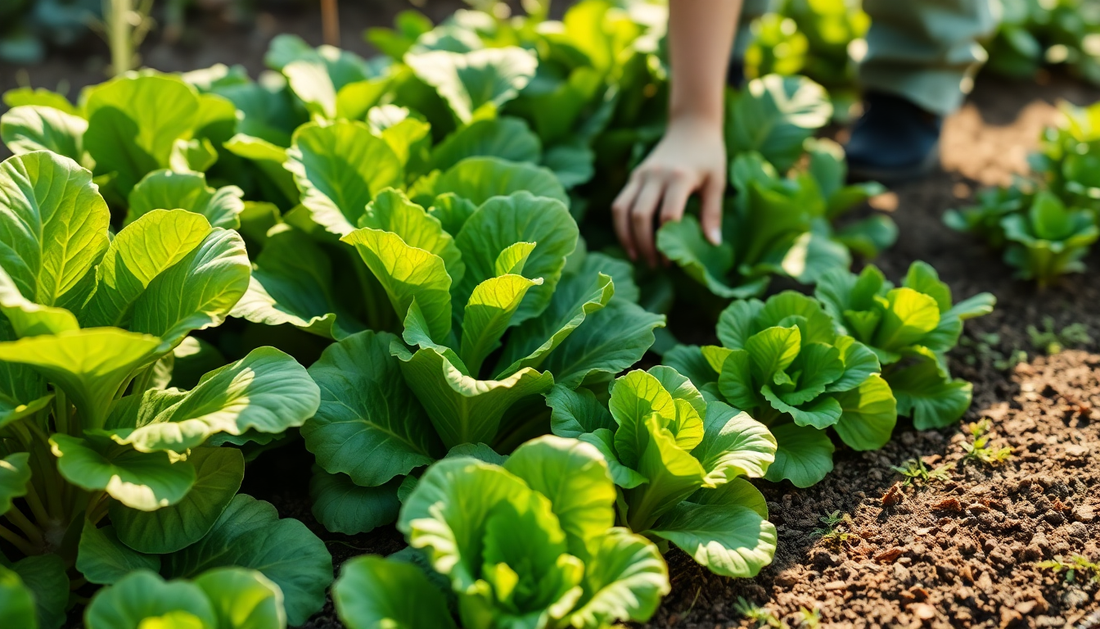
Preventing Premature Bolting: Keeping Your Leafy Greens Lush and Productive
As the sun rises on a crisp spring morning, the gardener in you is eager to get your hands dirty and nurture a bountiful harvest of leafy greens. However, one of the most frustrating challenges many gardeners face is the dreaded phenomenon of bolting - when your lettuce, spinach, and other greens suddenly shoot up a tall flower stalk, rendering the leaves bitter and unusable.
Bolting is nature's way of signaling that it's time for the plant to go to seed and reproduce, but for those of us seeking a steady supply of tender, flavorful leaves, this can be a major setback. Fortunately, with a little knowledge and some strategic gardening techniques, you can outsmart Mother Nature and keep your leafy greens thriving well into the season.
Understanding the Causes of Bolting
Before we dive into prevention strategies, it's important to understand what triggers bolting in the first place. Leafy greens are sensitive to a variety of environmental cues, and when these cues indicate that it's time to flower and set seed, the plant will shift its energy away from producing lush, succulent leaves.
The primary culprits behind bolting are:
Temperature
Warm temperatures, especially during the day, can signal to the plant that summer is on the way, prompting it to bolt. Many leafy greens thrive in the cool, mild weather of spring and fall, but as the mercury rises, they'll start to panic and rush into reproduction mode.
Daylight Hours
Increased daylight hours, as we experience during the transition from spring to summer, can also trigger bolting. Leafy greens are sensitive to changes in the length of the day, and as the days grow longer, the plants perceive it as a sign to flower and set seed.
Stress
Any kind of stress, whether it's drought, nutrient deficiency, or physical damage, can push a plant into bolting mode as a survival mechanism. The plant senses that its time is limited, so it redirects its energy into reproduction rather than continued vegetative growth.
Genetics
Some varieties of leafy greens are simply more prone to bolting than others. If you've noticed that a particular type of lettuce or spinach tends to bolt quickly in your garden, it may be worth trying a different cultivar that's been bred for improved bolt resistance.
Strategies for Preventing Bolting
Now that we understand the underlying causes, let's explore some effective techniques for keeping your leafy greens lush and productive throughout the growing season.
Choose the Right Varieties
When selecting seeds or seedlings, look for cultivars that are specifically marketed as "bolt-resistant" or "slow-to-bolt." These varieties have been bred to maintain their vegetative growth for a longer period, delaying the onset of flowering.
Some examples of bolt-resistant greens include:
- Lettuce: 'Jericho', 'Optima', 'Skyphos'
- Spinach: 'Bloomsdale Long Standing', 'Tyee', 'Corvair'
- Arugula: 'Astro', 'Sylvetta'
- Kale: 'Winterbor', 'Redbor', 'Lacinato'
Provide Optimal Growing Conditions
Ensuring that your leafy greens have the right growing conditions can go a long way in preventing bolting. Here are some tips:
Temperature
Aim to keep soil and air temperatures on the cooler side, ideally between 55-75°F (13-24°C). This may mean choosing a partially shaded spot in your garden or using row covers or shade cloth to protect your plants from direct sun and heat.
Moisture
Consistent, even moisture is key. Avoid letting the soil dry out, as this stress can trigger bolting. Water deeply and regularly, especially during hot, dry spells.
Nutrients
Make sure your plants have access to all the essential nutrients they need. A balanced, nutrient-rich soil or regular applications of organic fertilizer can help keep your greens growing strong and healthy.
Time Your Planting Strategically
The timing of your plantings can also play a role in preventing bolting. Try to get your greens in the ground as early as possible in spring, before the days start getting significantly longer. This gives them a head start on establishing a robust vegetative growth phase before the bolting triggers kick in.
For summer and fall crops, choose fast-maturing varieties and sow them in the coolest part of the season. This can help your greens reach maturity before the heat and longer days arrive.
Provide Shade and Cooling
If you live in a warm climate, consider using shade structures, row covers, or even a simple canopy of taller plants to keep your leafy greens cool and protected from direct sunlight. This can significantly delay the onset of bolting.
You can also try misting or lightly watering the plants during the hottest parts of the day to provide evaporative cooling and keep them from getting stressed.
Harvest Strategically
One of the best ways to prevent bolting is to harvest your greens frequently and consistently. Regularly removing the mature, outer leaves encourages the plant to continue producing new, tender growth rather than shifting its energy into flowering.
Pay close attention to the appearance of your plants, and harvest before you see any signs of a flower stalk beginning to emerge. This will keep your greens in a perpetual state of vegetative growth.
Conclusion
Preventing bolting in leafy greens takes a multi-pronged approach, but with a little planning and attention to detail, you can enjoy a bountiful harvest of fresh, flavorful leaves all season long. By choosing the right varieties, providing optimal growing conditions, timing your plantings strategically, and harvesting with care, you can outsmart Mother Nature and keep your greens lush and productive.
So, the next time you see that telltale flower stalk starting to emerge, don't despair - put these bolting prevention techniques into practice, and watch your leafy greens thrive.






No comments